If you’re reading this, you’re likely staring at a low subscriber count and feel as though you’re hurling your thoughts into the vast abyss that is Twitter. We’ve all been there, and we likely all have at least a few folks that we follow who we graciously toss a like to because, hey, they’re trying — we’ll call ours, Sampson.
As with any social media, it’s very easy to get discouraged in what many would consider a pay-to-play landscape where algorithms are heavily geared towards ad-spend, and engagement and visibility are immediately throttled the second you even think about the word “brand” or *gasp* “business account”.
We’re here to tell you that all hope is not lost. Those 6-figure accounts once started with 0, and they didn’t all spend 6-figures to get where they are today. As a collective of misfits who have built dozens of accounts over the course of our cumulative careers, we can say firsthand that, for every account that seems to be effortlessly growing — there’s an immense amount of work happening.
It’s about time we spoil the fun for everyone and demystify just exactly how to grow your Twitter account — and do it ad-free (but not completely free).
TL;DR:
- Discover your community
- Develop a content strategy
- Engage in your community
- Refine your strategy
A Community-First Approach:
Engaging with Prominent Accounts:
You may recall a few seconds ago when we were talking about 6-figure accounts. That’s good, those accounts are important as they will give you the greatest visibility early on in building your Twitter account.
If we were to determine the first steps towards growth, identifying these accounts would be it.
In our experiences, these accounts are generally the following:
- Prominent figures in your vertical
- Competitors (It’s a community after all…and a small world)
- Publications
- Tools + Platforms
Here’s why, and how to leverage each of these categories.
Prominent figures can be identified as content creators, professionals, or other key figures within your field.
Let’s say, for example, you were building a D2C brand for cookware. You might decide to follow prominent restaurants, Guy Fieri, Matty Matheson, Gordon Ramsay, etc. depending on how your brand aligns with them as individuals. Additionally, you may also identify content creators who do food-driven content, NYT Cooking & Food, and other cooking publications, as well as complimentary products in the space and direct competitors.
These accounts will serve two purposes:
- Content ideation
- Visibility and engagement opportunities

Following competitors and aspirational figures for the purposes of content ideation is often misinterpreted as “stealing ideas” though we generally implement the practice as nothing more than being a part of the conversation.
By observing the chatter that is happening in the comments of competitors and prominent figures, there’s ample opportunity to use those questions and concepts as the drive for new content itself.
While you’re there, adding something to the conversation will also give you the most visibility during the early stages of building your account as others participating in the conversation will be given visibility to your input.
Obviously, this is a quality vs. quantity practice and low-effort contributions will likely gain little to no traction for your account.
Here are 5 examples of low-quality comments:

Comments should always add new insights or opinions to not only establish your authority in the conversation happening but to stand out to those quickly scrolling through the comments.
A well-placed, well-thought-out comment can quickly gain you your first, or first 100, followers and signify to the Twitter digital deities that your account is, in fact, legit.
Why you should implement hashtags:
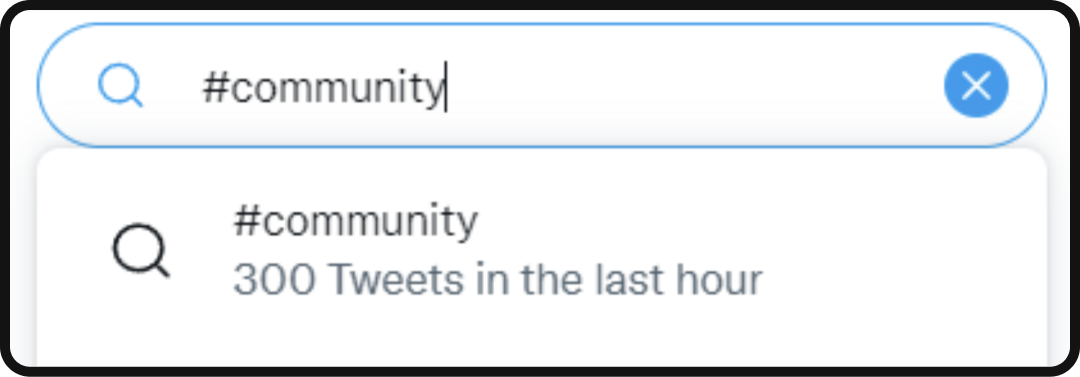
Our elder millennial status may be showing, but hashtags are our best friend.
There are a few key strategies that you can use to implement hashtags to grow your account and gain the sweet, sweet, followers that you deserve — these are them:
- Exposure
- Engagement
- Indexing
Gaining organic exposure:
Early-stage account growth is very much a visibility game of trying to get your content in front of as many people as possible, and then, of course, have them follow you.
Utilizing strategic sets of hashtags is a great way to amplify your content and reach new audiences as you grow your account.
Developing these hashtag sets is fairly simple, and many look to the previously covered prominent accounts to discover which sets they should be using.
For example, if Guy Fieri is using #flavortown to promote his new brand of wing sauce and you’re building a community around your new brand of grill tools, then #flavortown could easily be incorporated into your hashtag sets to put your content directly in front of his audience.
As you develop your content strategy and build your following, you can monitor and test hashtags with different posts to determine which are performing best to distill a working set of hashtags that you can regularly utilize for the best results.
Encouraging organic engagement:
Taking this a step further, these same hashtags can be followed and used as opportunities for engagement and community building.
In the instance of our grill tools, if we posted and received healthy engagement from our incorporation of #flavortown, then we have validated that those accounts that are interacting with that specific hashtag are also aligned with our content.
Once this has been established, time can be spent commenting and engaging directly with others who have posted using that specific hashtag as they are likely to be interested in your brand.
Once again, this effort must go beyond spamming every post with a like, though we will admit we sometimes do that without realizing it, with your focus being put on meaningful interactions that drive engagement.
If an account is posting about their upcoming “grill and chill in #flavortown” you can offer best practices for grilling and assert your authority as a grillmaster considering your product category and subject matter knowledge to gain visibility within that comment thread.
Indexing specific post types for discoverability:
Indexing posts with hashtags can help drastically with discoverability — particularly when building content series.
Using ourselves as an example in this case (sorry Guy), we have experimented with #NoGoodRabbitHole for our series of Twitter threads.
While it is unlikely that anyone is following or searching for a brand-specific hashtag at the early stages of their growth, there is an immense amount of value to amplifying engagement and visibility at any point possible.
Pairing a branded hashtag in a post with a general hashtag that will reach a wider audience will provide opportunities for those discovering your content to click through and discover similar content and, of course, go down the rabbit hole.
What types of content should you post?
As the food-obsessed individuals that we are, we have a habit of comparing our content strategies on Twitter and beyond to the menu at a restaurant — by ensuring our guests are able to be served exactly what they desire.
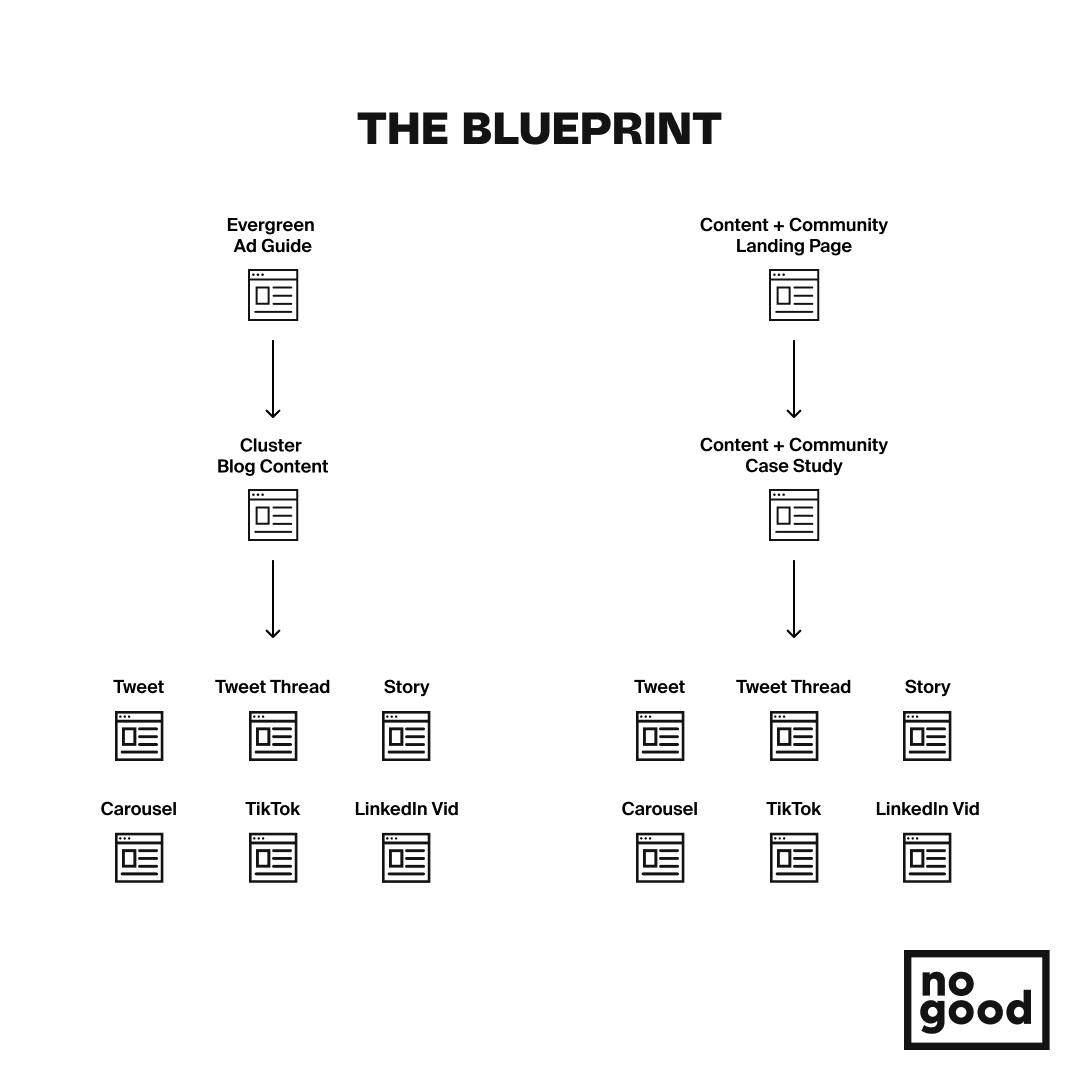
This means building a content strategy that satiates all appetites from our blog, which serves those looking for a full meal, to single tweets that serve as a snack or appetizer, to memes and gifs which are the dessert that leave you satisfied but may not necessarily have an intrinsic nutritional value.
Threads for complex topics:
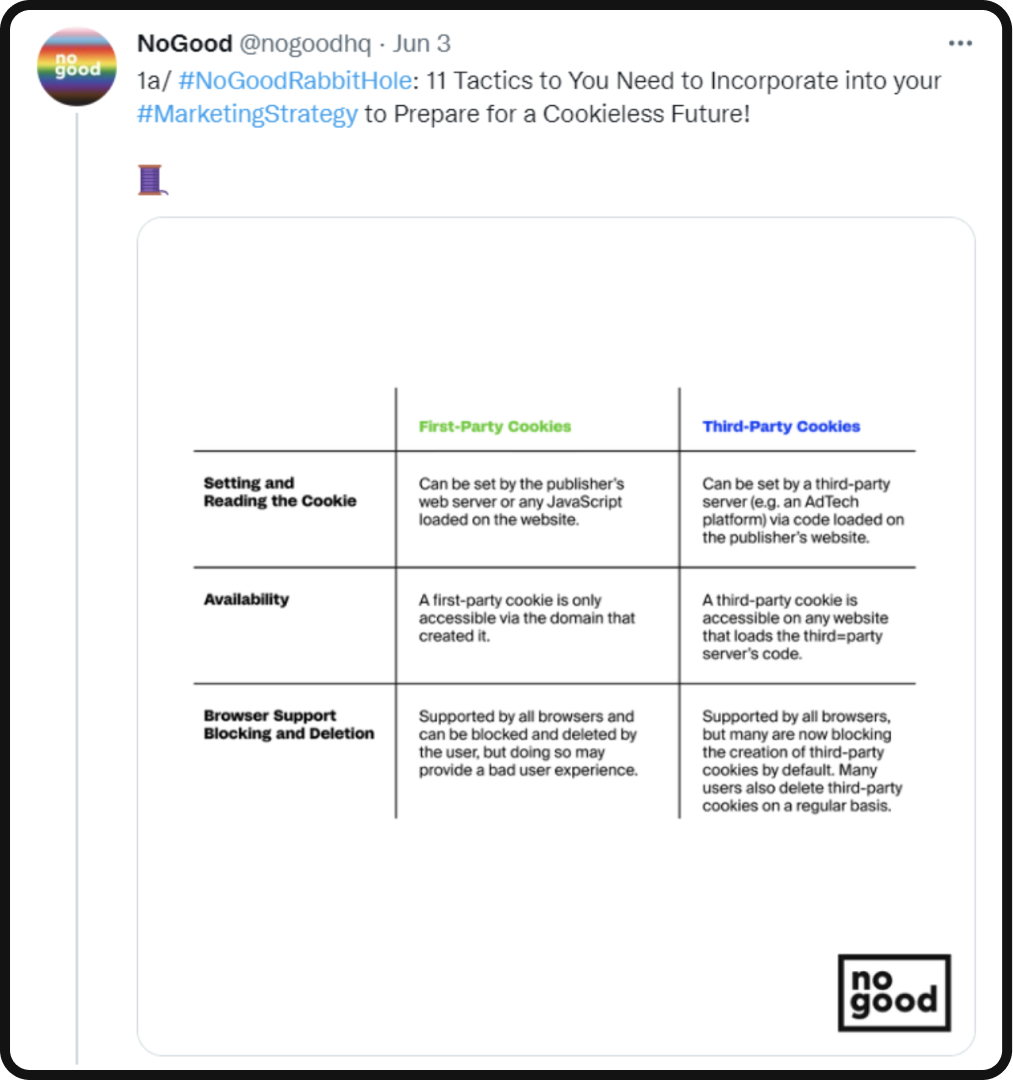
Threads have been arguably the greatest “feature” added to Twitter since they expanded to 280 characters and are a great opportunity to establish authority and provide a large amount of valuable content in a single serving.
The concept behind threads is fairly simple: a complex topic is broken down into bite-sized pieces that serve similarly to a bulleted list which can then be posted in a single thread with each section acting as a comment to the parent post.
The application for these can be anything, such as sharing learnings from your experiences in your field, with many formatting their parent tweet as follows:
“After (x number of years) in (industry of choice) I have learned (lesson), here are (x number of steps) that got me there.”
There is an argument that there is a benefit to using this format through pavlovian conditioning, as users are accustomed to seeing this type of content in their feed and know what to expect when they see it, but there’s an equally valid argument that the format has reached a critical mass where the format blends into a sea of sameness.
We have found that incorporating infographics, memes, gifs, and other forms of visual aid to the parent tweet helps to distinguish our content from the deluge of other posts in order to stop the scroll and increase click-through.
Single tweets for simple ideas:
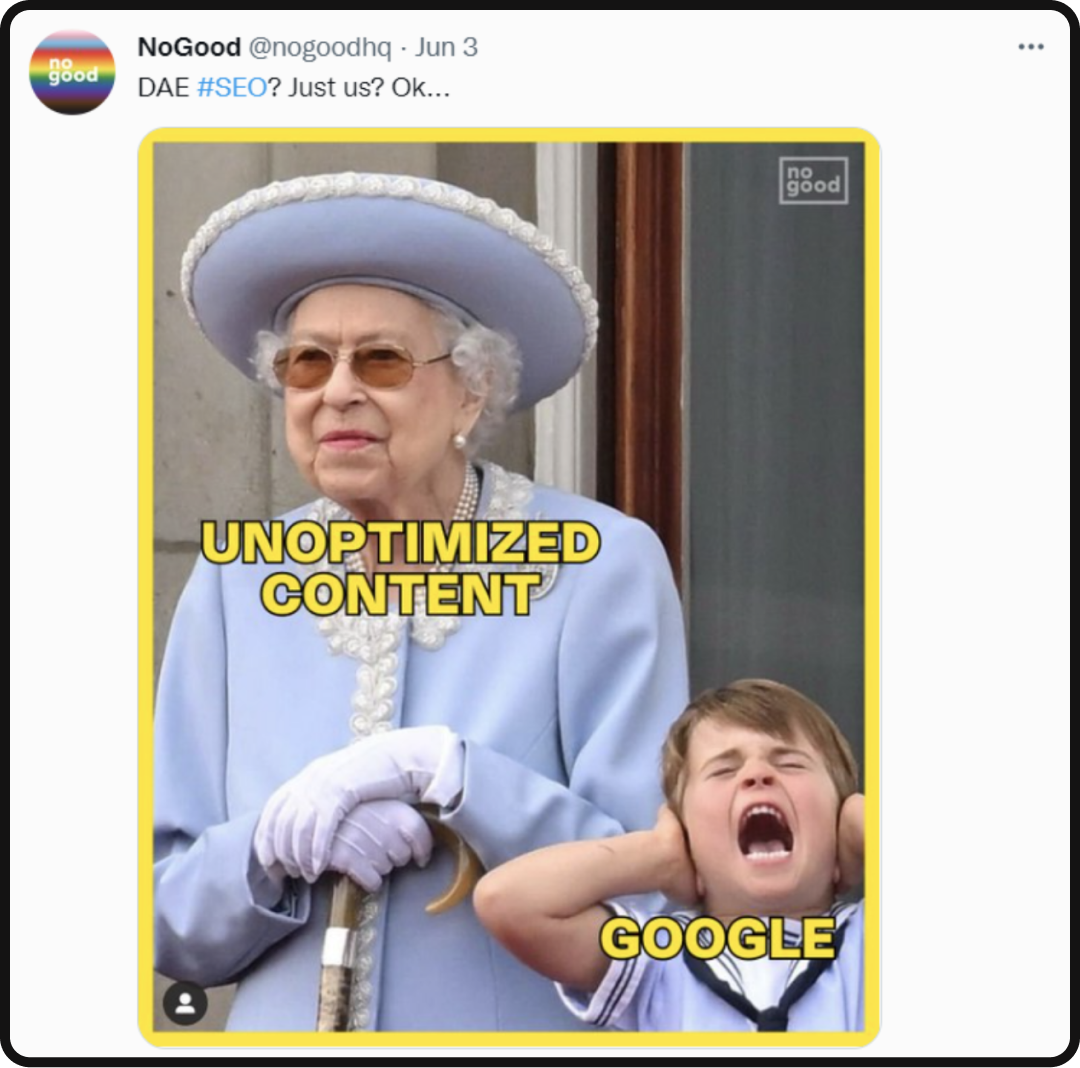
These serve as quick and easy-to-digest pieces of content that are succinct enough to not boggle the mind, but substantial enough to linger with you beyond your first glance.
Single tweets can vary from quotes that we pull from our blog content which Google has blessed as featured snippets, or that we found particularly profound and worthy of sharing, to memes that are paired with insightful text, infographic pieces we’ve developed as companions to our blog content, or hot takes from our own internal conversations and thoughts.
The purpose here is intrigue and encouragement to click through, like, follow, or otherwise engage with the account — providing users with enough information to pique their interest, but not so much that they don’t feel as though the interaction is complete.
Responsive content for increased visibility:

As thought leaders, and as part of the process of establishing our authority on the platform, signaling to our audience and community that we are paying attention to and aware of what is happening in our landscape is equally as important as publishing our own authoritative content.
As we move into a community-driven landscape, we must recognize that we are working in tandem with our competition, rather than in opposition to them.
This may seem counterintuitive, but we’re absolutely not shy to admit that we admire those who occupy our same space, and as much as we are all trying to achieve prominence as the best in our class, that doesn’t mean our public communications should ignore what they’re doing or pretend that they don’t exist — particularly because we share the same community and audience.
Sharing relevant content from similar accounts, aspirational accounts, and relevant figures within your particular vertical is an incredible tool for growing awareness and gaining exposure to existing audiences as it encourages the parent of the original content to retweet, share, or comment themselves.
Additionally, sharing content that is found outside of Twitter from established publications and authoritative sites covering your vertical encourages high levels of engagement through providing teachable moments by way of sharing insights from sources your community may not be immediately familiar with.
How frequently should I be posting?
Rapid iteration is something that we recommend above nearly all else. This is particularly true when launching and building a new social media channel as it is the fastest way to determine both what works, and what doesn’t work.
Obviously, this can fluctuate greatly depending on what your vertical is. Spaces like Web3 have an immense amount of opportunities to participate in the conversation, post updates, and otherwise engage in a rapidly changing landscape. Other verticals may be more static and require fewer pieces of content to be deployed on any particular day.
What we have found that is as close to a universal content cadence that is applicable to nearly any account is as follows:
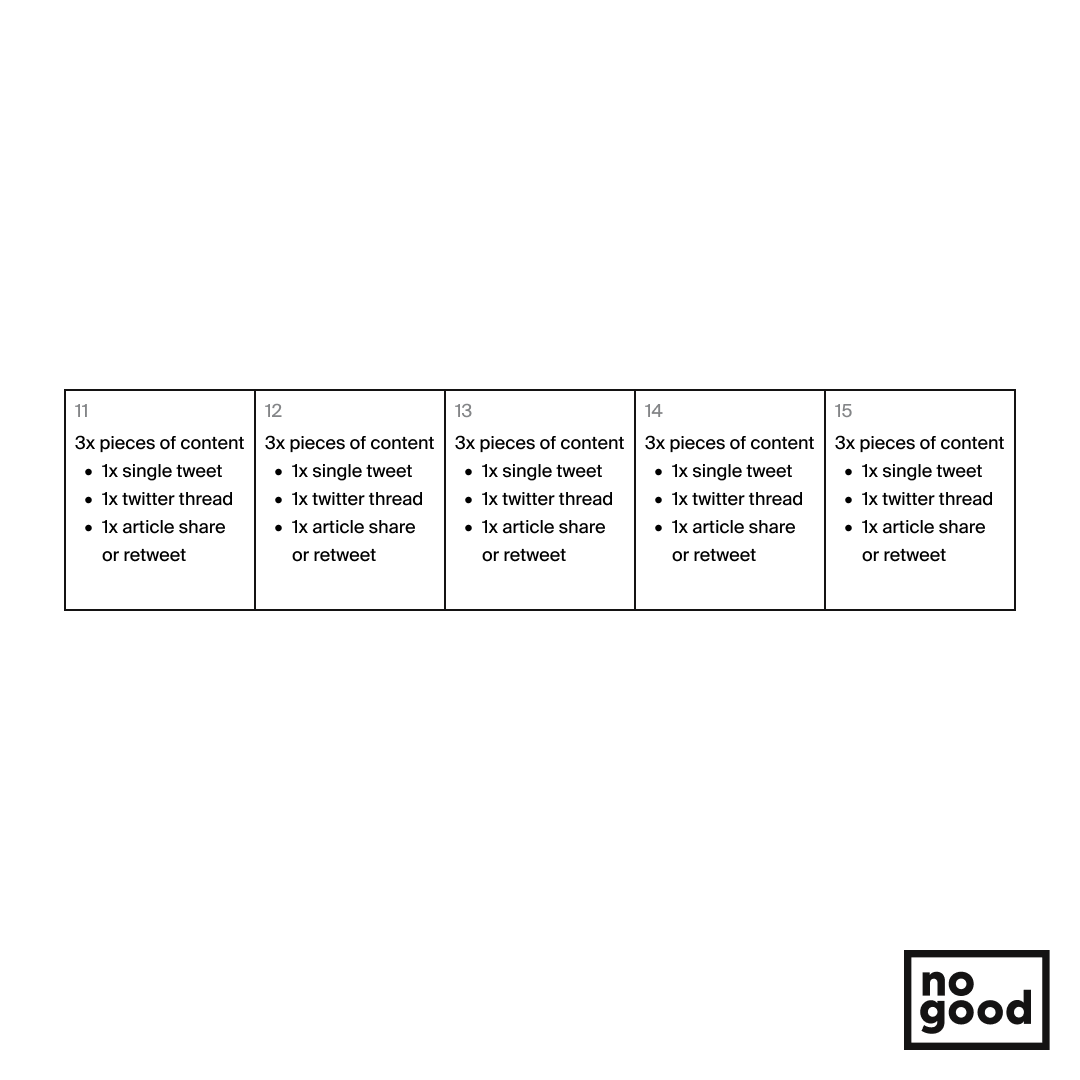
This may seem like an excessive amount of content to be deployed each day, but if maintained for 30 days it will provide you with incredible insights into not only what content resonates with your community, but when the best times to post are, and of course, what hashtags are best utilized for your content.
Structurally, these three content types can be deployed and rotated on any given day in order to ensure that by the end of 30 days you’ve deployed enough of each content type at various times of day to have a substantial enough data pool to draw insights from.
A quick example of how you might structure your deployment is as follows:
Day 1:
9AM: Single Tweet
12PM: Twitter Thread
6PM: Article Share or Retweet
Day 2:
9AM: Twitter Thread
12PM: Article Share or Retweet
6PM: Single Tweet
Day 3:
9AM: Article Share or Retweet
12PM: Single Tweet
6PM: Twitter Thread
Times can be adjusted as the month progresses in order to create a blanket of posting times and content types to pull data from and make determinations and hypotheses to shape future content strategies and deployments.
This brings us to…
What tools should I be using?
We love tools. We tweet about them. Write about them (we’re doing it right now). Recommend them to our partners. And of course, use them in our daily lives.
There are a number of tools that we have found to be paramount to the experience of successfully building a Twitter account, and these are them:
Sprout Social:
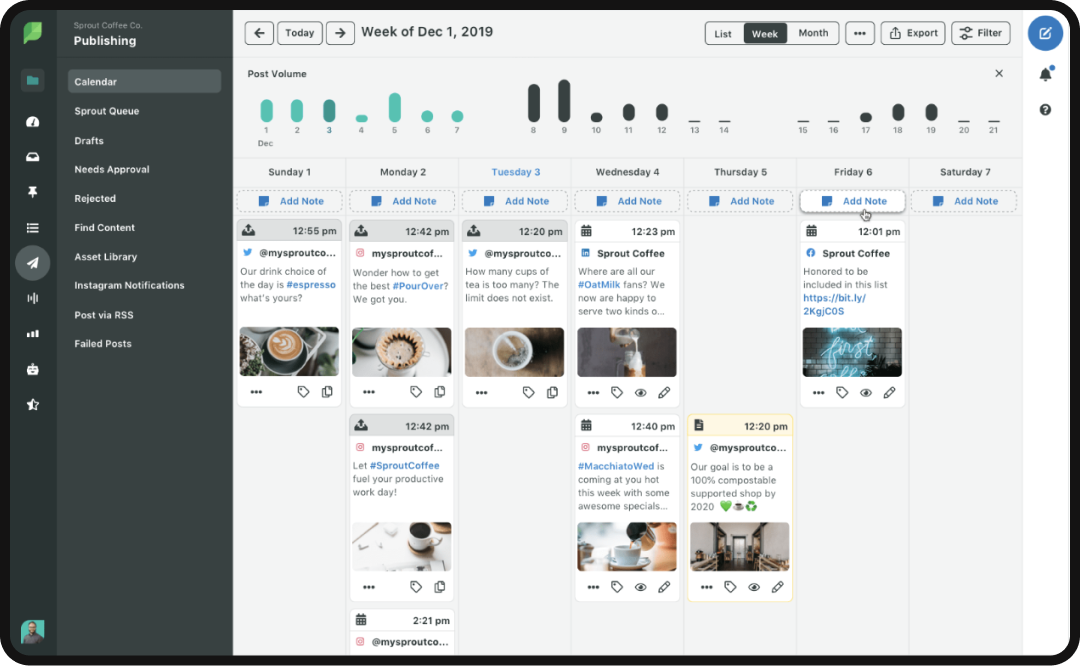
Sprout Social is the answer to every time that someone has thought, “Wouldn’t it be cool if (insert social media platform) could do (insert functionality)?” It is a robust social media management platform that does pretty much everything — and then some.
Our top 3 uses are as follows:
- Social Listening
- Automation
- Reporting
Social listening to gain insights and content ideas:
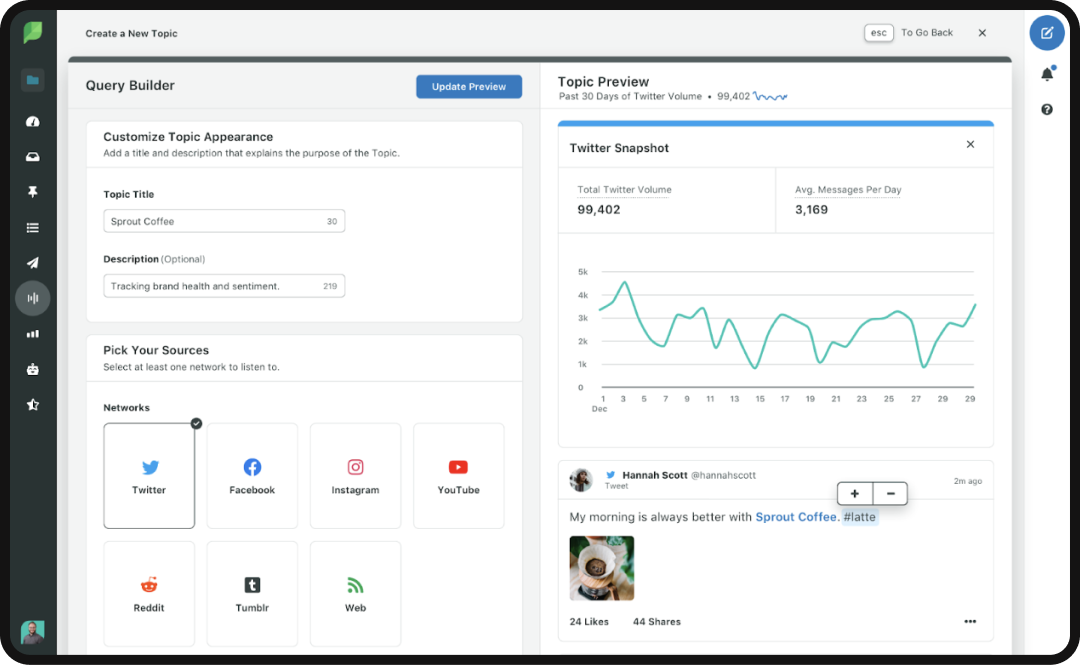
Social listening goes beyond the insights that Twitter, or really any other social media platform, will provide you as a user — and allows you to harness it for good.
While Twitter Blue (we’ll touch on that later) does provide insights into articles that your community is sharing, and will curate content that is relevant to you based on your preferences, Sprout’s social listening tools go so, so, so much further.
In the early stages of building your account, the most valuable insights that you’ll be able to harness from Sprout are content driven. The social listening tools provide incredible insights into competitors, the content they’re posting, and conversations that are happening that are related to your brand — with things like brand sentiment reports and other valuable insights coming into the fold once you establish a bit of prominence.
Automating content to maintain cadence:
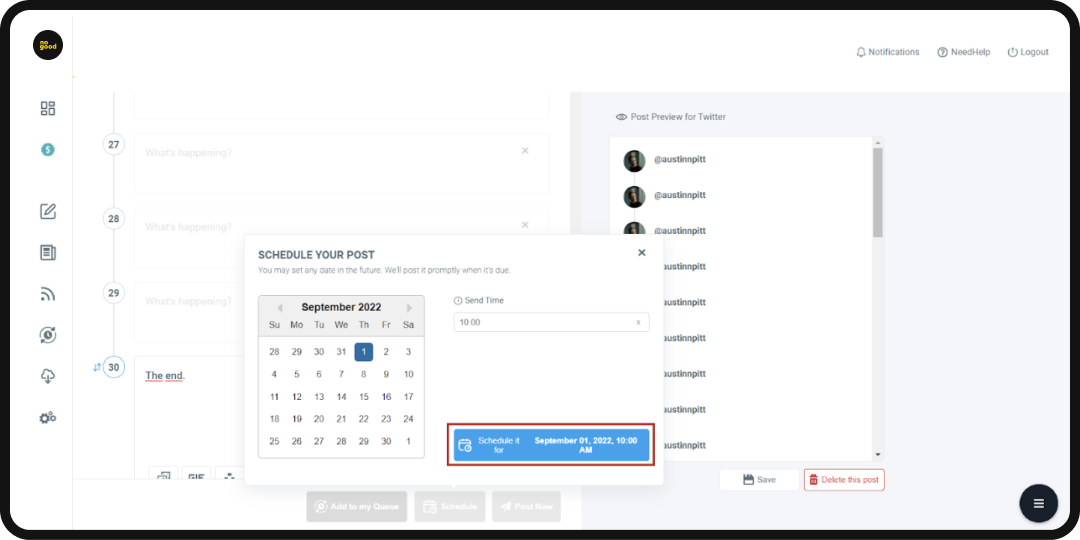
Remember those 3 post types we spoke about? Good news! You can automate ⅔ of them on Sprout, which makes the testing immensely easier, and of course, saves you a ton of time and stress not having to sit around and count down the seconds to posting that hot new meme you made for that particular time of day.
While this may not seem like a lot, it is incredibly helpful when considering that, at least in the first 30 days, you’ll be posting ~90 pieces of content. With Sprout, you can automate 60 of them — a huge time saver.
Tagging + reporting for advanced tracking:
Our absolute favorite for so many reasons.
Tagging is a feature that can help you geek out on data and supercharge your reporting after 30, 60, 90 days, and beyond.
Tagging may seem like a simple feature, and it really is, but it can be used to get as granular into your post performance as you want to.
For every post that you deploy you can tag for the time of day, time of the week, content type, campaign type, subject, length, image, video…you get the idea.
This makes running reports infinitely more insightful as you can say with a high degree of certainty what preferences your audience has and the reasoning behind the best-performing posts that you’ve deployed.
This isn’t even making mention of the incredibly robust reporting tools that are already available before you get into the weeds.
Sprout reports provide insights into best-performing posts, and hashtags, while also providing audience analysis and other valuable metrics to help you build your audience rapidly and efficiently.
RSS feeds for content ideation:

RSS is a fantastic tool for content ideation, and to a certain extent social listening too — but really just content ideation by allowing users to subscribe to pretty much anything.
This is something we implement ourselves for tracking news within certain landscapes and keeping up to date on whatever is current for our different verticals.
It’s a simple process where users can add ‘feeds’ for specific purposes whether it’s a blog page from an agency such as NoGood which will populate a new post whenever a blog is published, or a subreddit that is relevant to your business that will drip in the top threads of any particular day, or a particular hashtag on Twitter, or keyword on Google.
The result is a single channel that you can dedicate your attention to each day which will curate for you the stories and conversations worth reading, and of course, sharing on your Twitter account.
Twitter Blue for additional insights:
Before you say anything, it’s only $3 per month, which is a fair amount of money to pay for being able to access Reader Mode for your threads. Otherwise, everything it offers is done better by either Sprout or RSS — but again it’s only $3 and makes the user experience for your audience significantly better when interfacing with your content so it’s worth it.
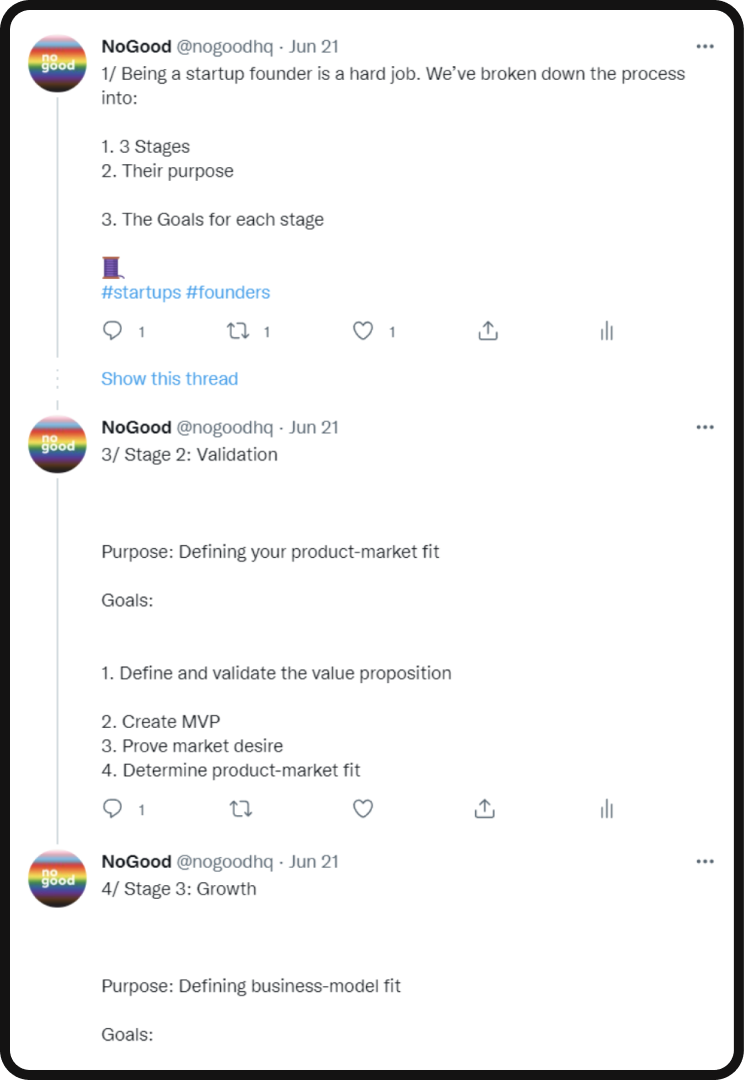
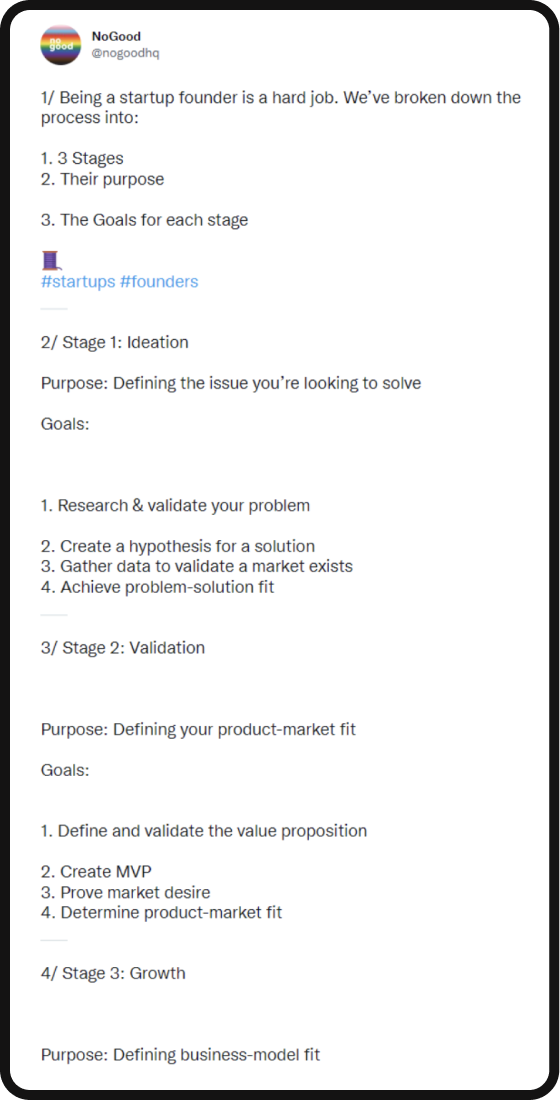
Honorable Mentions (Kind of):
There are a few implementations that were not included above, which we wanted to address briefly and explain why they were omitted from the discussion while touching upon their potential risks and benefits.
Here they are:
Twitter Spaces for direct interactions:

Twitter Spaces is a not-so-subtle clone of Clubhouse — a live social audio platform.
While many have found success in the implementation of Spaces in their strategy, we avoid recommending tactics that are not sustainable, and with the recent announcement that Twitter is pulling teams from Spaces it comes into question whether the feature will last.
Twitter itself has a storied history of introducing copy-cat features from competitor platforms that fall flat and are ultimately forgotten, and so this strategy is specifically geared towards utilizing features that have proven staying power.
Additionally, Spaces does not offer the ability to share or download recordings after the conversation has ended, and so as a part of a broader content strategy, we would make the recommendation to seek other avenues for audio-driven content.
Video content to stop the scroll:
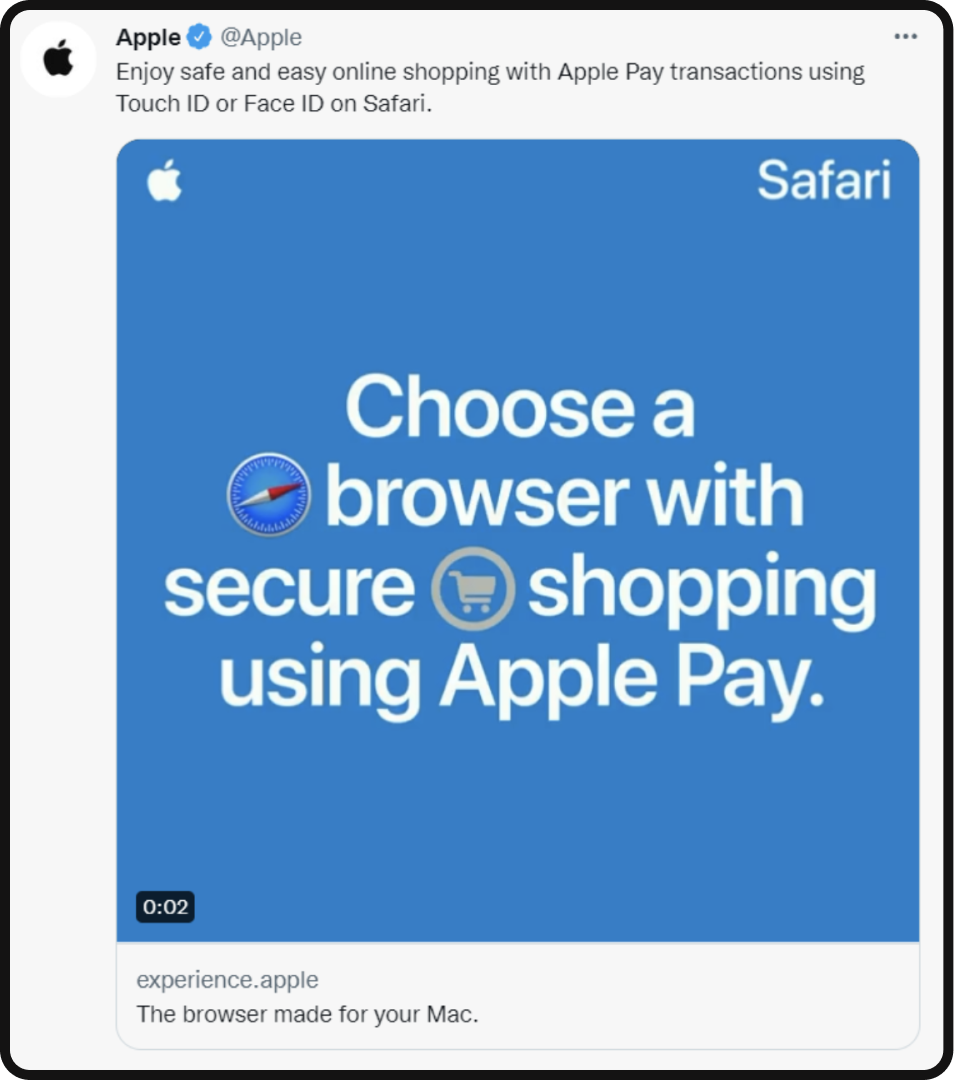
While video content is establishing prominence across all social media platforms, it has been suspiciously absent from Twitter’s feature strategy.
There is evidence that video content is frequently shared, though the platform has done very little to improve the video experience since it was introduced as an option in 2010 outside of extending video length.
We are actively experimenting with video on Twitter, but there is a lot that is left to be desired from the tool-set that Twitter offers and it’s not something we would immediately recommend until they make significant improvements to the video experience.
Revue for long-form content:
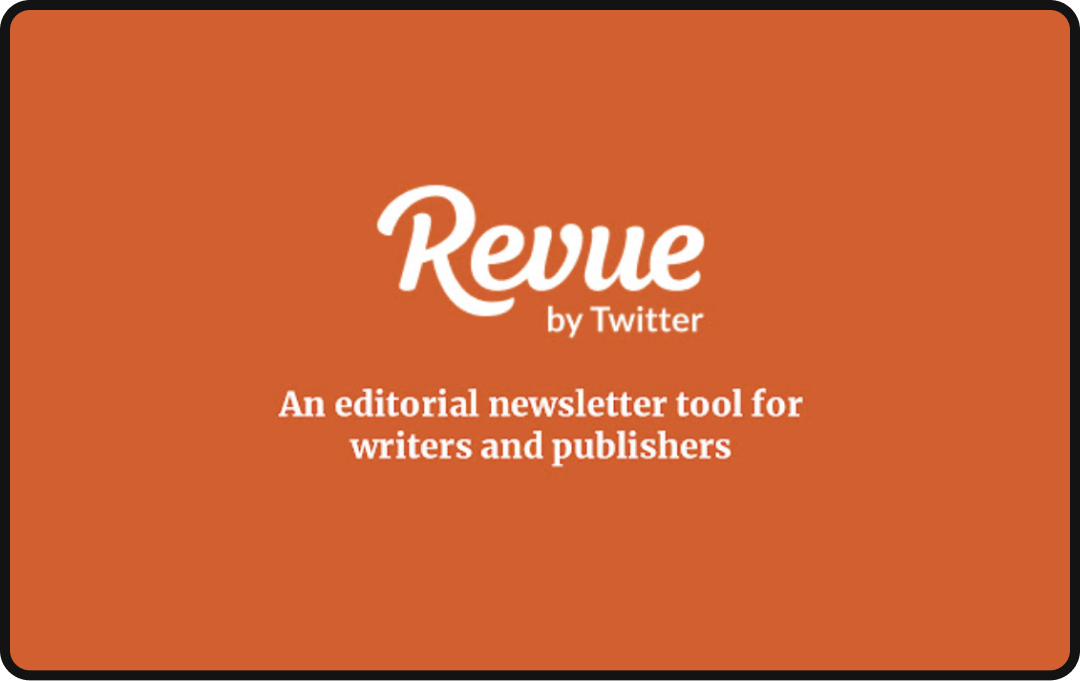
We love a good newsletter, that’s not a heavily guarded secret.
Unfortunately, we don’t love Twitter’s Revue integration and similarly cannot recommend it as a sustainable avenue for channel growth as the Revue teams were called out as targets for team cuts as Twitter looks inward and makes attempts to reinvent itself.
Twitter has just announced, however, the introduction of Notes which will provide users the opportunity to write long-form content such as blogs, newsletters, and other forms of 280+ character content. We’ll definitely be diving into that and sharing our blog content and newsletter for additional reach ASAP.
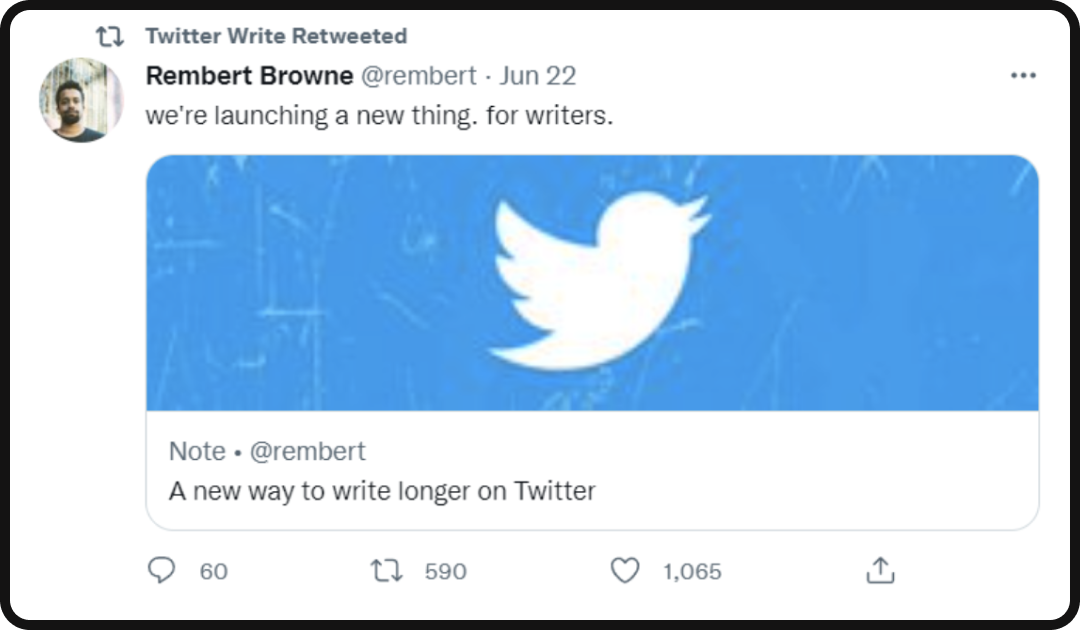
/thread:
Twitter is absolutely a unique space on the internet that has its own quirks and nuances that many find both charming and divisive.
As a tool for developing community, there’s an immense amount of value to the opportunities that the platform presents for brands with its offering of access to carefully segmented communities that have been growing organically since the platform began in 2006.
It’s inarguable that Twitter has been stuck in an identity crisis in recent years, and it’s still to be determined just what shape the platform will take as it potentially changes hands and goes private. However, what exists now is a robust space for organic interactions and engagement.
As it stands now the greatest progress that Twitter has made as a community platform in its 16 years of existence has been the expansion of its character count, though we do have cautious optimism that 16 years from now it will have progress further.
Bonus Tip:
You can always write a Twitter guide to generate traffic through SEO and get those people to follow your Twitter account because you share all sorts of incredible insights and information there. 😉





